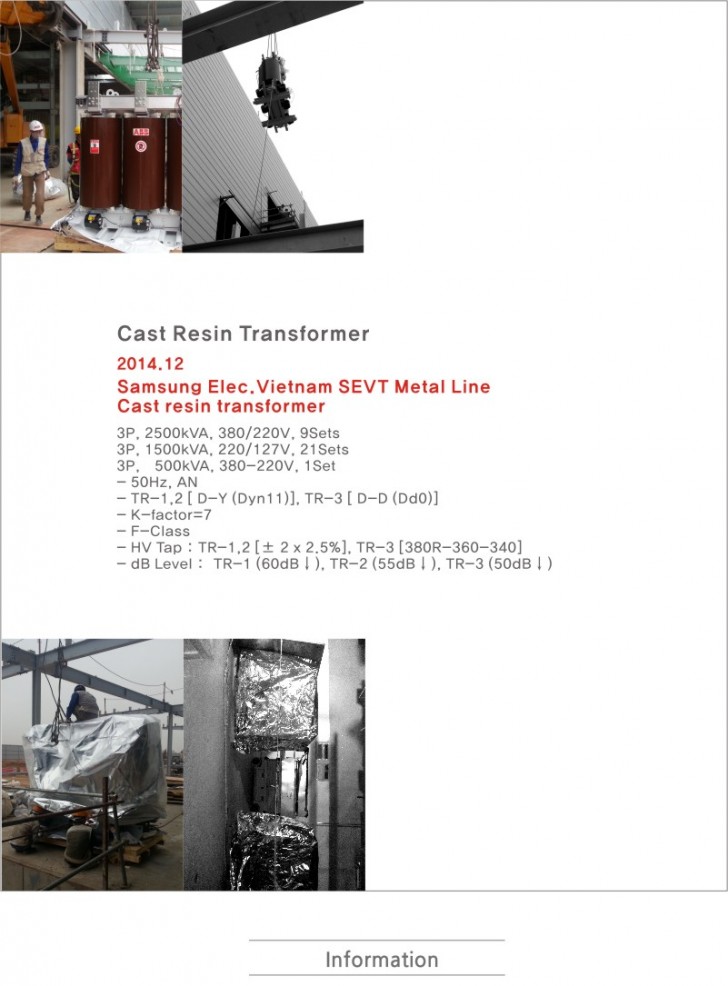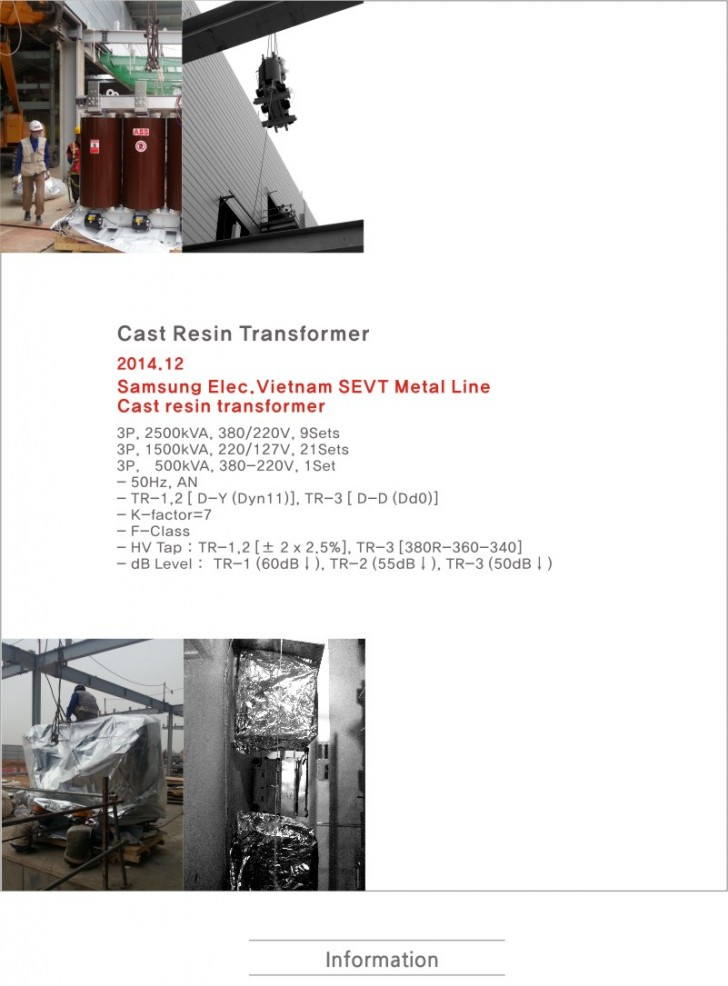Samsung Electronic
Company: Samsung Electronic
Project: Vietnam SEVT Metal Line Cast Resin Transformer
Date: 2014.12
Hình ảnh dự án
Company: Samsung Electronic
Project: Vietnam SEVT Metal Line Cast Resin Transformer
Date: 2014.12
Hình ảnh dự án


Company: Samsung Electronic
Project: Vietnam SEVT Metal Line Cast Resin Transformer
Date: 2014.12
IEEE Recommended Practice for Establishing Transformer Capability When Supplying Nonsinusoidal Lo-ad Currents
▶ Design considerations for new transformer specification
1. Harmonic current filtering
2. Impact on the neutral
3. Power factor correction equipment
4. Electrostatic ground shields
Electrostatic ground shields are frequently specified between the windings. The presence of electrostatic ground shields fends to reduce capacitive coupling between the windings. This reduces the coupling of transients between the two windings. Line disturbances produced by converter equipment connected to the transformer secondary will be reduced, but will not be eliminated on the primary side of the transformer.The shields are not intended to reduce harmonic currents, but by virtue of their magnetic coupling to windings carrying such currents, additional heating losses are induced. The electrostatic shields are a supplement but not necessarily a replacement for harmonic current filtering. Therefore, filtering may still be needed to achieve the desired power quality.
The electrostatic shields also serve as protection to the secondary side of the transformer from transients that may be impressed on the high-voltage winding. This is especially important for transformers with ungrounded secondaries. Transients on the high-voltage side of a transformer can dramatically increase the surge voltage seen on an ungrounded secondary winding from what may have been expected for a grounded winding.This may damage transformer windings and parts or equipment connected on the secondaryside of the transformer. The presence of an electrostatic ground shield between the primary and secondary win-dings reduced the magnitude of the transient coupled to the secondary windings.
5. Design consideration outside the windings
6. Harmonic spectrum analysis
7. Design consideration in the windings
